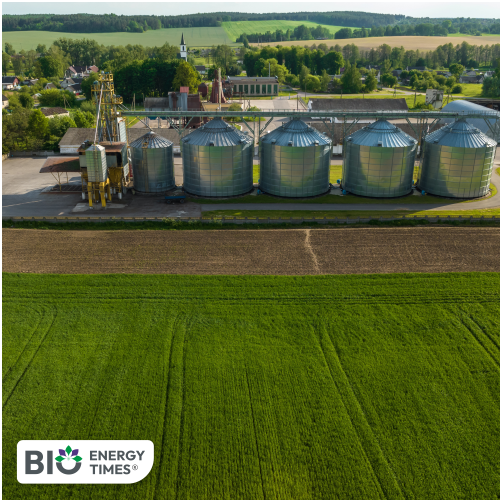A biogas facility in South Bedfordshire has received approval to expand its operations from five to nine acres and increase production capacity to five megawatts of biomethane, despite earlier opposition from the local parish council, reports Bioenergy Insight.
The site, located on an arable farm near Hockliffe just off the A5, required clearance from the Secretary of State for Housing, Communities and Local Government because it lies within a designated greenbelt area.
Under the approved plans by Trinity Hall Farm and Trinity Hall Biogas, the facility will add two more digester tanks, a digestate storage tank, three feed units, and two slurry intake tanks. The expansion also includes four pasteurisation tanks, an oxygen injection system, a gas upgrader, a grid entry unit, three propane tanks, a low-voltage unit, an emergency run-off lagoon, extended access roads, parking areas, and new landscaping.
Although planners described the development as a major alteration to the greenbelt, they noted that extensive landscaping measures could help reduce its visual impact.
According to the company, the project will bring several environmental benefits, generating renewable energy through anaerobic digestion. The process produces digestate by-products that can be used as natural fertiliser. Gas produced on-site will be converted into energy using a combined heat and power unit, with the location offering easy access to the national grid.
Planning officials highlighted that anaerobic digestion breaks down organic waste in an oxygen-free setting, producing renewable gas and nutrient-rich digestate. The plant’s design also uses the site’s natural topography to limit its visual footprint.
Chalgrave Parish Council had earlier raised concerns about the 69% increase in site size, the tripling of digestate output, and a sixfold rise in energy production.
E4environment director Deb Cairns said the plant, which has been in operation since 2014, will see a fivefold boost in energy generation and a threefold increase in feedstock. She added that the upgraded system will allow gas to be injected directly into the grid, improving efficiency from 43% to 99%, while reusing heat produced during digestion.
Cairns also noted that using farm manure as feedstock supports a circular economy by reducing the need for artificial fertilisers — a major source of ammonia emissions — and helps improve soil health through the production of refined organic fertiliser.
Local councillors commended the proposal as well-planned, environmentally responsible, and well-integrated into the landscape. The project ultimately received unanimous approval.
















